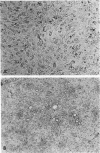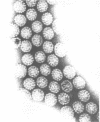Abstract
Some of the properties of a new human papovavirus, BK, have been examined. Host range studies of BK virus (BKV) showed human cells to be more sensitive to infection than monkey cells; human fetal brain cells appear to be highly sensitive to BKV, with the production of extensive cytopathology characterized by cytoplasmic vacuolization. The hemagglutinin of BKV is associated with the virion and is resistant to ether or heating at 56 C for 30 min. Fluorescent antibody as well as neutralization tests indicated antigenic similarities between simian virus 40 (SV40) and BKV. Cells undergoing lytic infection with BKV synthesized intranuclear T antigen(s) which reacted with SV40 T antibody demonstrable by immunofluorescence. However, BKV did not appear to induce SV40 transplantation antigens in transplantation-resistance tests. Evidence was obtained that BKV was present in humans prior to the widespread use of polio vaccines, thus ruling out the possibility that BKV is an SV40-related monkey virus, introduced into the human population by accidental contamination of poliovirus vaccines.
Full text
PDF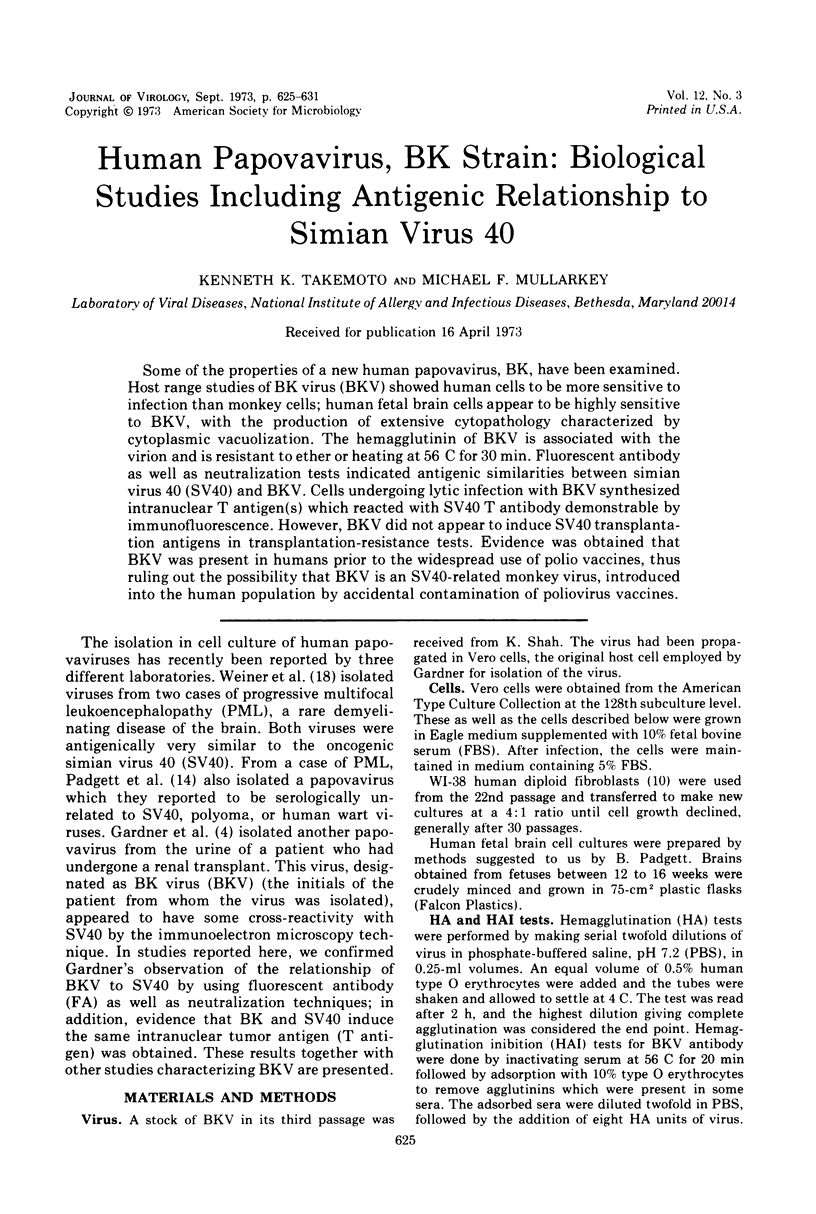
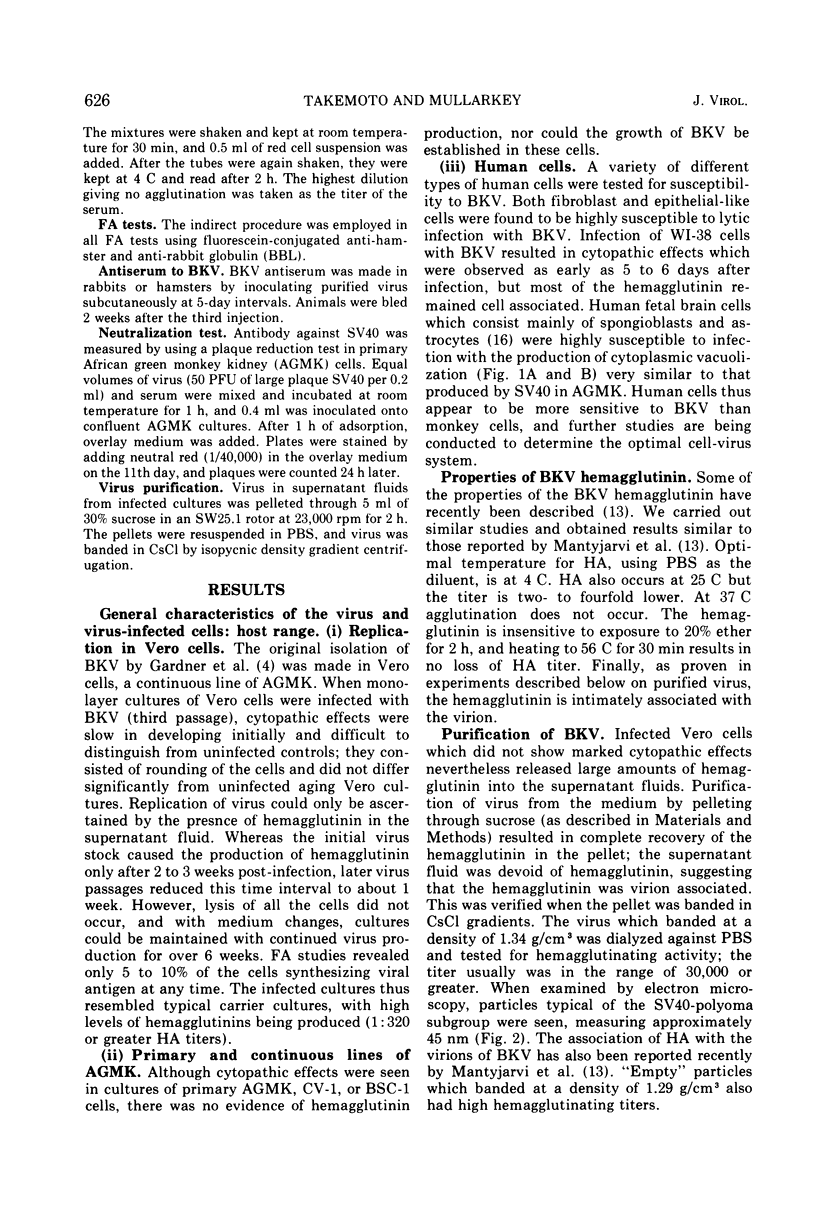
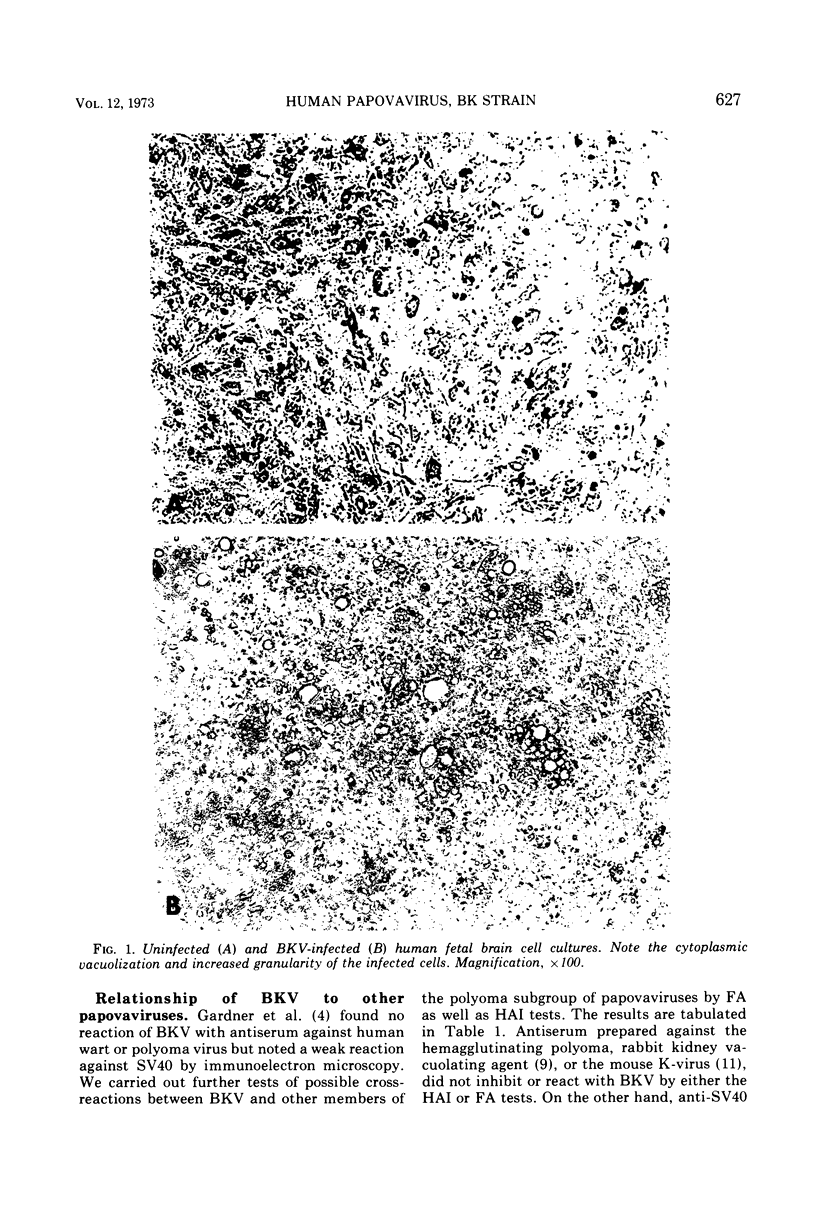
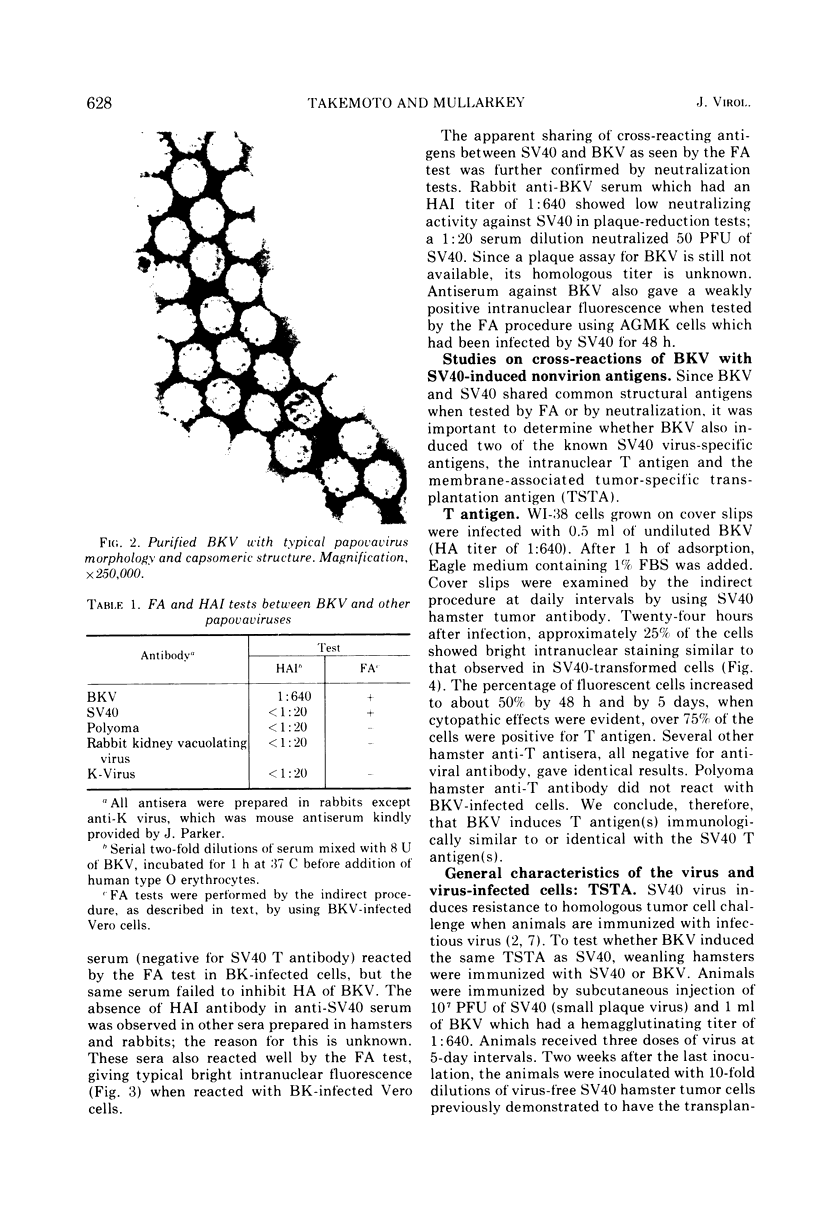
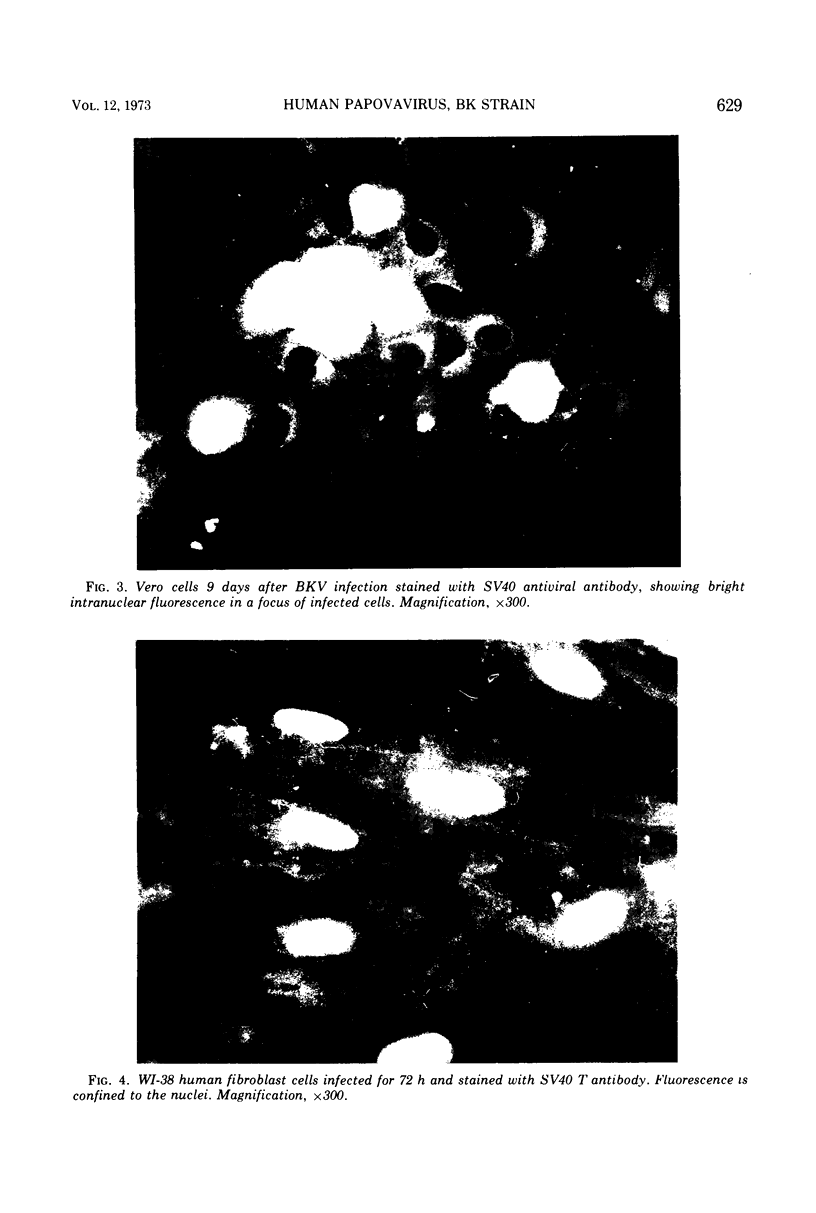
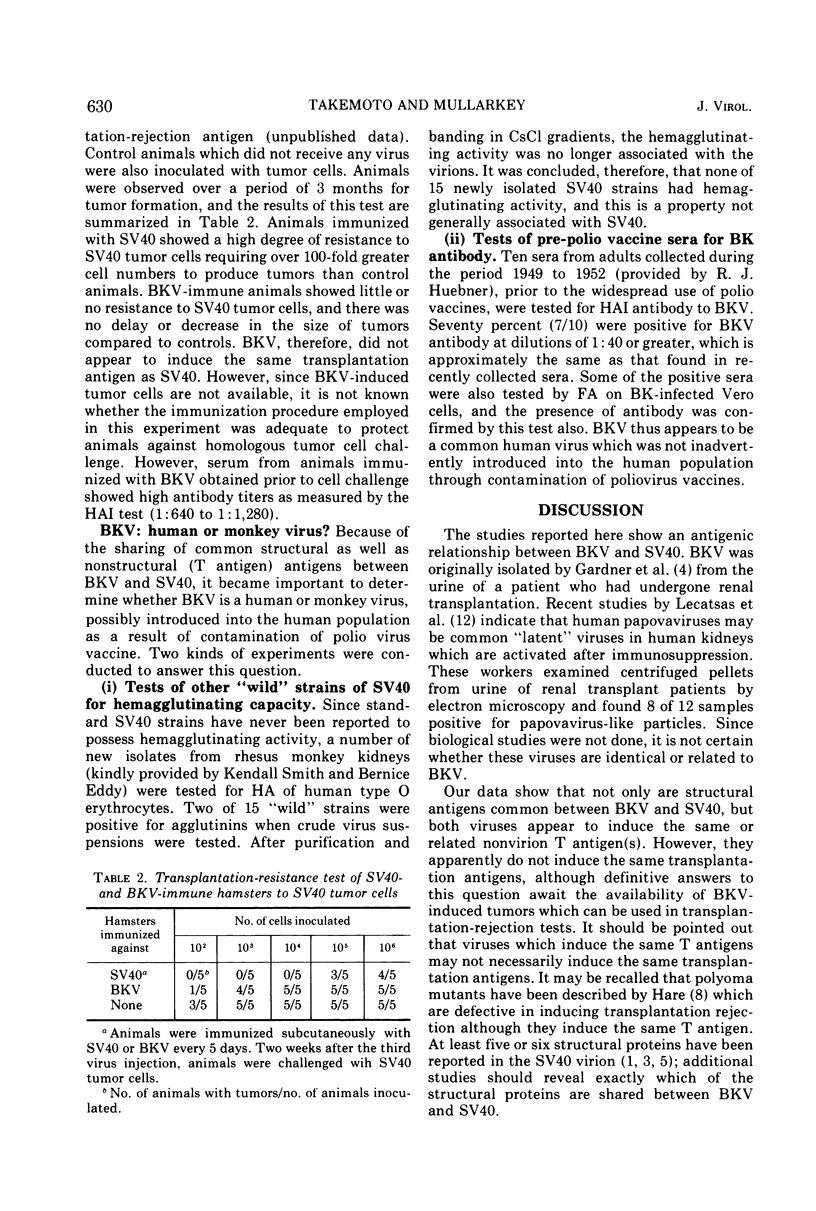
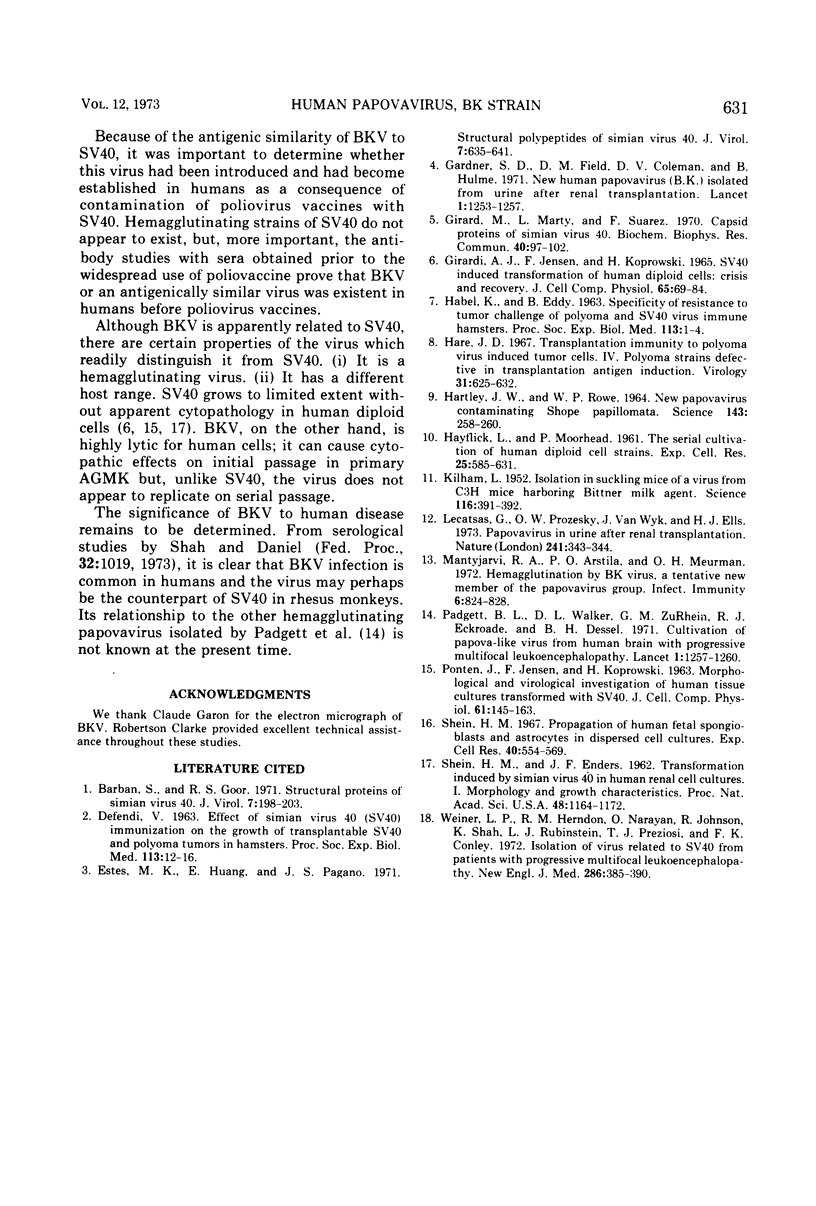
Images in this article
Selected References
These references are in PubMed. This may not be the complete list of references from this article.
- Barban S., Goor R. S. Structural proteins of simian virus 40. J Virol. 1971 Feb;7(2):198–203. doi: 10.1128/jvi.7.2.198-203.1971. [DOI] [PMC free article] [PubMed] [Google Scholar]
- DEFENDI V. Effect of SV 40 virus immunization on growth of transplantable SV 40 and polyoma virus tumors in hamsters. Proc Soc Exp Biol Med. 1963 May;113:12–16. doi: 10.3181/00379727-113-28261. [DOI] [PubMed] [Google Scholar]
- Estes M. K., Huang E. S., Pagano J. S. Structural polypeptides of simian virus 40. J Virol. 1971 May;7(5):635–641. doi: 10.1128/jvi.7.5.635-641.1971. [DOI] [PMC free article] [PubMed] [Google Scholar]
- Gardner S. D., Field A. M., Coleman D. V., Hulme B. New human papovavirus (B.K.) isolated from urine after renal transplantation. Lancet. 1971 Jun 19;1(7712):1253–1257. doi: 10.1016/s0140-6736(71)91776-4. [DOI] [PubMed] [Google Scholar]
- Girard M., Marty L., Suarez F. Capsid proteins of Simian virus 40. Biochem Biophys Res Commun. 1970 Jul 13;40(1):97–102. doi: 10.1016/0006-291x(70)91051-x. [DOI] [PubMed] [Google Scholar]
- HABEL K., EDDY B. E. Specificity of resistance to tumor challenge of polyoma and SV 40 virus-immune hamsters. Proc Soc Exp Biol Med. 1963 May;113:1–4. doi: 10.3181/00379727-113-28259. [DOI] [PubMed] [Google Scholar]
- HARTLEY J. W., ROWE W. P. NEW PAPOVAVIRUS CONTAMINATING SHOPE PAPILLOMATA. Science. 1964 Jan 17;143(3603):258–260. doi: 10.1126/science.143.3603.258. [DOI] [PubMed] [Google Scholar]
- HAYFLICK L., MOORHEAD P. S. The serial cultivation of human diploid cell strains. Exp Cell Res. 1961 Dec;25:585–621. doi: 10.1016/0014-4827(61)90192-6. [DOI] [PubMed] [Google Scholar]
- Hare J. D. Transplant immunity to polyoma virus-induced tumor cells. IV. A polyoma strain defective in transplant antigen induction. Virology. 1967 Apr;31(4):625–632. doi: 10.1016/0042-6822(67)90191-2. [DOI] [PubMed] [Google Scholar]
- KILHAM L. Isolation in suckling mice of a virus from C3H mice harboring Bittner milk agent. Science. 1952 Oct 10;116(3015):391–392. doi: 10.1126/science.116.3015.391. [DOI] [PubMed] [Google Scholar]
- Lecatsas G., Prozesky O. W., van Wyk J., Els H. J. Papova virus in urine after renal transplantation. Nature. 1973 Feb 2;241(5388):343–344. doi: 10.1038/241343a0. [DOI] [PubMed] [Google Scholar]
- Mäntyjärvi R. A., Arstila P. P., Meurman O. H. Hemagglutination by BK virus, a tentative new member of the papovavirus group. Infect Immun. 1972 Nov;6(5):824–828. doi: 10.1128/iai.6.5.824-828.1972. [DOI] [PMC free article] [PubMed] [Google Scholar]
- PONTEN J., JENSEN F., KOPROWSKI H. Morphological and virological investigation of human tissue cultures transformed with SV40. J Cell Comp Physiol. 1963 Apr;61:145–163. doi: 10.1002/jcp.1030610206. [DOI] [PubMed] [Google Scholar]
- Padgett B. L., Walker D. L., ZuRhein G. M., Eckroade R. J., Dessel B. H. Cultivation of papova-like virus from human brain with progressive multifocal leucoencephalopathy. Lancet. 1971 Jun 19;1(7712):1257–1260. doi: 10.1016/s0140-6736(71)91777-6. [DOI] [PubMed] [Google Scholar]
- SHEIN H. M., ENDERS J. F. Transformation induced by simian virus 40 in human renal cell cultures. I. Morphology and growth characteristics. Proc Natl Acad Sci U S A. 1962 Jul 15;48:1164–1172. doi: 10.1073/pnas.48.7.1164. [DOI] [PMC free article] [PubMed] [Google Scholar]
- Shein H. M. Propagation of human fetal spongioblasts and astrocytes in dispersed cell cultures. Exp Cell Res. 1965 Dec;40(3):554–569. doi: 10.1016/0014-4827(65)90234-x. [DOI] [PubMed] [Google Scholar]
- Weiner L. P., Herndon R. M., Narayan O., Johnson R. T., Shah K., Rubinstein L. J., Preziosi T. J., Conley F. K. Isolation of virus related to SV40 from patients with progressive multifocal leukoencephalopathy. N Engl J Med. 1972 Feb 24;286(8):385–390. doi: 10.1056/NEJM197202242860801. [DOI] [PubMed] [Google Scholar]



